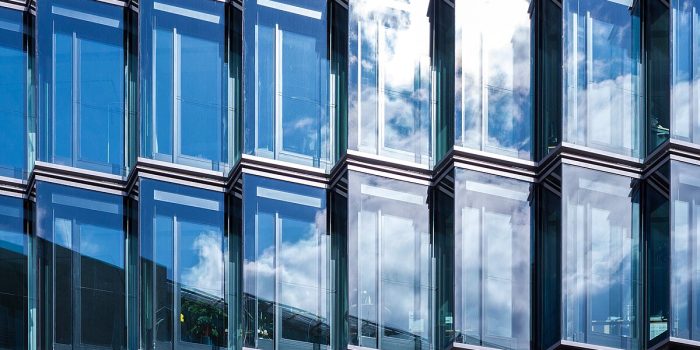At Notre Dame University, researchers have invented a window coating that could change the way our buildings are cooled. The transparent coating was developed through the combination of quantum physics and machine learning to allow visible light to pass through while preventing heat-producing UV and infrared radiation. With this innovation, not only can room temperature be reduced, but also the amount of energy consumed in cooling processes, regardless of the sun’s position at any given time.
Windows are often two sides of the same coin. On one hand, they provide beautiful views and abundant natural light, but on the other hand, they can be a major cause of heat gain, particularly in hotter seasons. Around 87% of heat gains in buildings could come through windows because of UV radiation. This typically forces people to use more air conditioning or restrict natural light by covering windows with curtains or blinds.

In order to address this problem, researchers at Notre Dame created a window coating that selectively inhibits UV and infrared light while letting visible light through. Planar multilayered (PML) photonic structures, which selectively transmit or reflect light depending on its wavelength, are the foundation of this coating. They developed a transparent coating that outperforms currently available heat-reducing coatings on the market by stacking incredibly thin layers of silica, alumina, and titanium oxide on a glass foundation and covering it with a thin layer of silicon polymer (PDMS) to reflect thermal radiation.
What sets this coating apart is its ability to maintain effectiveness at different angles. Unlike conventional coatings optimized for light entering at a 90-degree angle, this coating remains efficient even when sunlight hits windows at oblique angles. This was achieved through a quantum-computing-assisted machine learning model that optimized the PML structures’ configuration for a wide range of incident angles.

In tests, the coated windows reduced temperatures by between 41.7 °F and 45 °F (5.4 °C to 7.2 °C) compared to normal glass across various incident angles. This has significant implications for energy savings, with potential annual savings of up to 97.5 MJ/m2 in the US alone. The researchers envision numerous applications for this technology, including in commercial and residential buildings and cars.
While scalability and cost-effectiveness are still being explored, the researchers are optimistic about the potential of their window coating to revolutionize energy-efficient cooling solutions.


